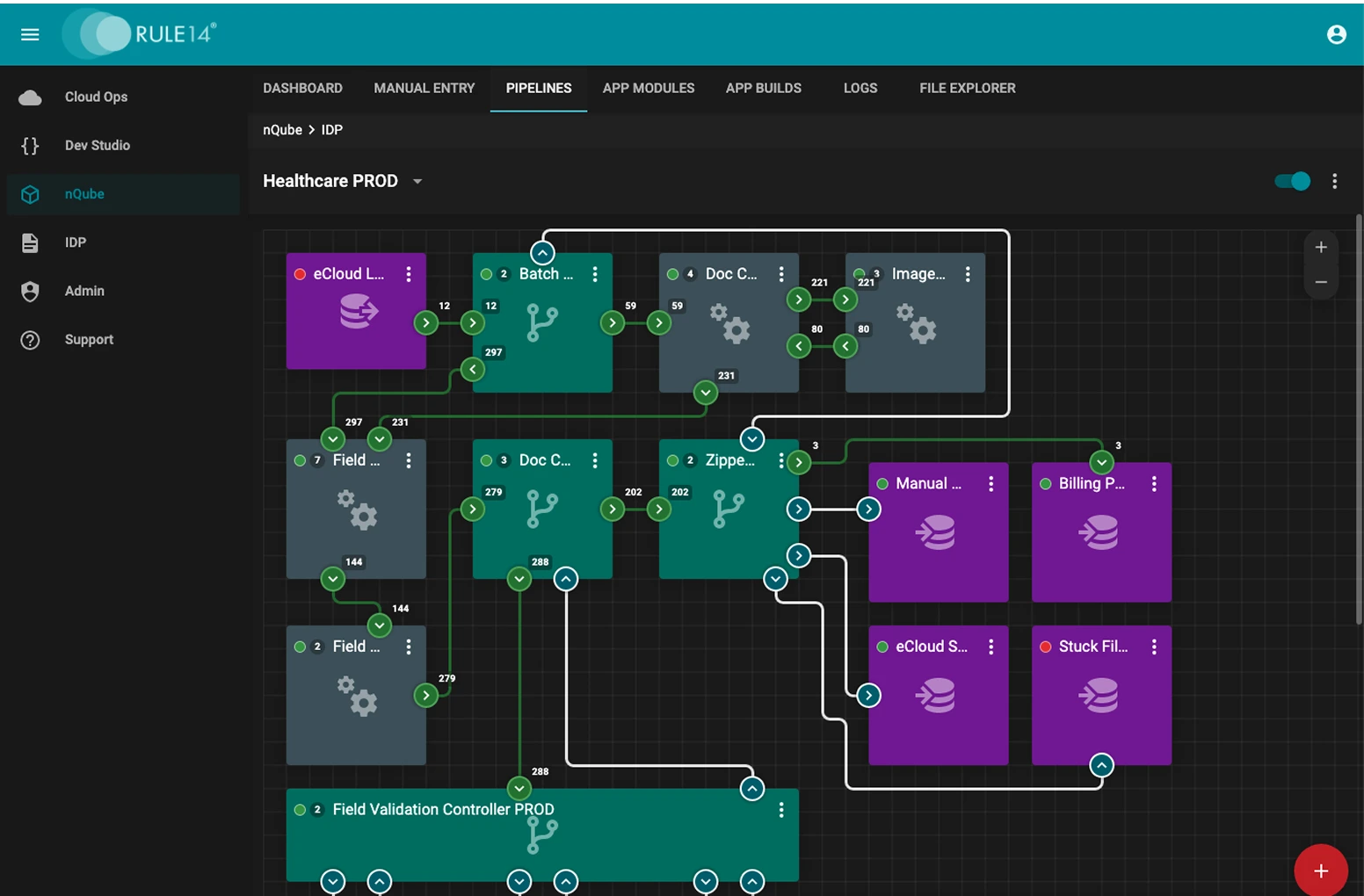Table of Content :

AI-Powered Solutions for Smarter Enterprise Data Management
In the current digital environment, companies deal with enormous volumes of data every day. Handling this data efficiently is crucial for making informed decisions, maintaining productivity, and reducing errors. Traditional manual data handling is slow and error-prone. That’s why
Intelligent Document Processing has emerged as a key AI-driven solution to streamline document workflows, automate extraction, and improve data accuracy across the board.
The Role of AI in Data Management

As companies grow, they deal with more and more complex data. To handle different types of data keep it accurate, and get useful information from it, you need smart solutions. AI-powered automation can help by:
- Reducing the burden of manual data processing
- Enhancing speed and efficiency in handling data
- Organizing and structuring unstructured information
- Supporting better decision-making through intelligent analysis
- Helping organizations maintain compliance with data security standards
Industries such as finance, healthcare, legal, and research rely heavily on IDP to eliminate bottlenecks, optimize operations, and allow teams to focus on higher-value work.
Scalable IDP Adoption for Varied Business Needs

No two businesses have the same data workflow. Some may start with basic document classification, while others require advanced extraction across millions of documents.
A modular IDP platform allows organizations to:
- Start small and scale with business needs
- Test and refine document workflows incrementally
- Integrate easily with existing systems via APIs and connectors

Streamlined Access and Usability

Adopting AI should not be a complex process. The more common and easily accessible AI solutions are if they feature great UI & defined workflows. Here's what makes it easy to use:
- Intuitive Dashboards: Providing a clear overview of data processes.
- Secure Access: Allowing users to manage data safely.
- Step-by-Step Guidance: Get things going without being a tech expert.
- Customization Options: Make it work the way you want.
This is vital to ensuring those without technical background can lean on automation powered by AI.
Pre-Built IDP Templates for Efficiency

To eliminate the complexity of building automation from scratch, many IDP platforms offer pre-trained models and templates for:
- Legal Document Review: Extract clauses, deadlines, and contract terms.
- Financial Data Extraction: Convert invoices, receipts, and statements into structured formats.
- Email Parsing Identify attachments, flag key content, and categorize messages.
- Web & PDF Scraping: Harvest structured data from reports and external sites.
- Automated Data Extraction: The system parses the document and forms data from what was extracted.
- Resume and HR Document Processing: Extract candidate data and automate onboarding
These templates drastically cut down setup time and allow faster return on investment.
Extracting Information from PDFs Using AI

Many organizations rely on PDF files to store and share important documents. Extracting data from these files can be difficult, particularly when they contain unstructured text. AI-powered tools and Optical Character Recognition (OCR) technology help retrieve relevant information more efficiently.
How AI-Powered PDF Processing Works
- Upload the PDF: The user provides a document or URL for secure processing.
- Define Data Requirements: Identify particular fields like dates names & figures etc.
- Select an AI Model: The appropriate model is chosen to enhance accuracy.
- Automated Data Extraction: The system parses the document and forms data from what was extracted.
This approach minimizes manual effort and ensures accuracy in extracting key details from PDFs.
Understanding the Data Processing Workflow

AI-powered data extraction follows these key steps:
- OCR Processing: Converts scanned content into machine-readable text.
- AI-Based Information Extraction: Identifies and organizes relevant details.
- Structured Output Generation: Formats extracted data for easy integration into existing systems.
Who Benefits from AI-Driven Data Extraction?

Finance & Accounting
- Automates invoice processing and reconciliation.
- Extracts financial details for better record-keeping.
- Reduces errors in tax and compliance documentation.
Human Resources
- Extracts key information from resumes.
- Organizes employment contracts efficiently.
- Automates performance and payroll data analysis.
Legal Sector
- Identifies crucial clauses in contracts and agreements.
- Streamlines speed of document review and enforce compliance checks.
- Assists in legal research by organizing case details.
These examples show how easy AI can make complicated workflows and increase operational productivity.
Benefits of IDP

Organizations that integrate AI-based automation into their processes can experience multiple benefits:
- Reduced Time and Effort: AI minimizes the need for manual data entry and review.
- Improved Accuracy: OCR and AI models increase the quality of text extraction.
- Cost Savings: Automating routine processes reduce overhead.
- Scalability: AI solution will scale, according to the requirements of growing businesses.
The Future of AI in Enterprise Automation

The role of AI in business automation continues to expand, with advancements expected in:
- More Accurate AI Models: Steady enhancements of data processing performance.
- Real-Time Data Processing: Faster automation with instant insights.
- Seamless Integration: Better compatibility with existing enterprise software.
- Adaptive Learning: AI learning models learning and becoming more accurate through user feedback.
As AI technology evolves, businesses incorporating intelligent automation will be better equipped to efficiently manage growing data demands.